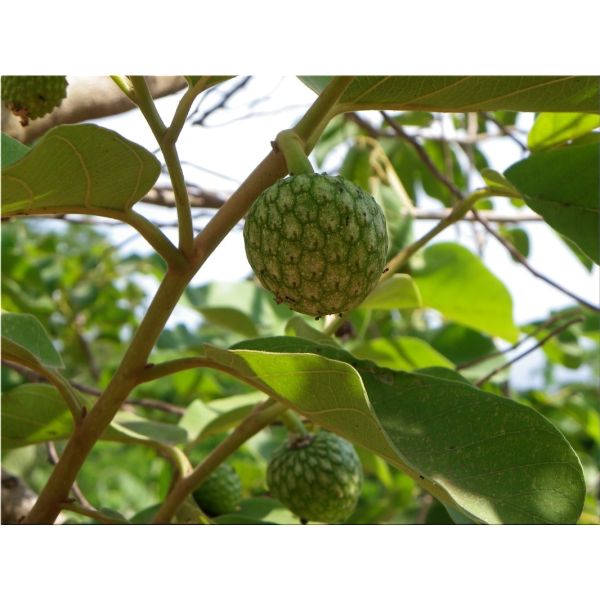Annona Senegalensis Seeds (Annona Chrysophylla, Anone Seeds)
Annona Senegalensis Seeds (Annona Chrysophylla, Anone Seeds)
Tends to favor sandy soils, but grows well in a wide variety of soils. Very demanding of light, should be place in full sun.

Delivery
All orders shipped with UPS Express.
Always free shipping for orders over US $250.
All orders are shipped with a UPS tracking number.
Returns
Items returned within 14 days of their original shipment date in same as new condition will be eligible for a full refund or store credit.
Refunds will be charged back to the original form of payment used for purchase.
Customer is responsible for shipping charges when making returns and shipping/handling fees of original purchase is non-refundable.
All sale items are final purchases.
Help
Give us a shout if you have any other questions and/or concerns.
Email: contact@domain.com
Phone: +1 (23) 456 789
Availability: Out of stock
SKU
Annona Senegalensis
Annona senegalensis is also known as Wild Custard-Apple. This species is native and common in savannas throughout tropical Africa. This specie is little-known outside its natural range.
The Annona is usually seen as a shrub under taller trees, and grows throughout the Eastern Province, particularly in the valleys. A. senegalensis is a well-known fruit that is sold in local markets and when eaten fresh, it is said to be one of the preferred fruits of Africa.
This is a sprawling shrub or a tree that can grow up to 20 ft (6 m) high with smooth, silvery bark. When the tree gets older it will be rough and thick, with grey-orange young hairy branches.
The deciduous leaves are aromatic, alternate and blue-green above. They are oval, 3-7 in (7.5-17.5 cm) long, 1 1/2 - 4 in (4-10 cm) wide, prominently veined and hairy beneath with a peculiar smell when crushed.
The flowers, borne singly or in pairs in the leaf axils on stalks 1 to 1 1/2 in (2.5-4 cm) long, are clasped by a 3-parted calyx and have 3 triangular, thick, waxy, velvety, whitish outer petals, 3 pale-yellow inner petals, and numerous stamens. The Annona blooms from October through December, but along the coast it flowers during December through February.
Typically compound, the pineapple-scented fruit is smooth but with the carpers distinctly outlined on the surface and is yellow or orange when ripe. The solid, rounded oval, edible fruit resembles that of its close relative, the cultivated custard apple. The fruit is fleshy, rounded, up to 4 cm across with overlapping scales and many seeds within the soft pulp. The fruit should be picked while still green to avoid damage by birds, and then kept for ripening.
The fruit pulp is edible and said to have an apricot-like flavor. Many people say that it is one of the best of the indigenous fruits in parts of tropical Africa. It is much appreciated in the wild by shepherds. According to Irvine, the unopened flower buds are used in soup and to season native dishes; and the leaves are eaten. The fruit matures during the long rains and is edible from January through March.
Hardiness zone:
9-10. (-5c/25f, 1c/35f). This tree tends to favor sandy soils, but grows well in a wide variety of soils. It is very demanding of light so it should be place in full sun. The wild custard apple is limited to tropical areas up to an elevation of 5,000 ft (1,500 m) and thrives best where its roots can reach water. Annona senegalensis remains leafless for several months in the dry season
| Common name | African Custard-Apple |
|---|---|
| Species | Annona senegalensis |
| Germination | The seeds need to be scarified, so soak them in hot water and let the water cool for 24 hours. Seedlings with 70F bottom heat germinate in about 21 days. Without heat, seeds may take 1-2 months for germination. Sow 2 seeds per pot, about 1?2 cm deep, then cover with a fine soil layer. Compact gently and water to saturation. Water them once a day during the dry season, and every 2?3 days during the wet season if necessary, to keep the seed-bed moist but not saturated. Seedlings of 6-9 month age are usually large enough to be set out in the field. Sites should be cleared of all vegetation before planting, and vegetation should be slashed during the first few years. Germination is also good on recently cultivated and burnt lands. The seeds can be sowed outside in fall season or after the last frost of winter. If sowed outside, prepare a raised seedbed of 1.2 m by 4 m, above soil level to ensure good drainage. Leave 1?3 cm between the seeds and 10 cm between rows. |
| Price View | Price Range |

